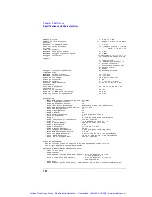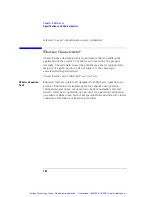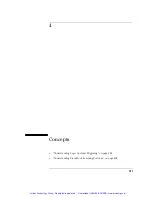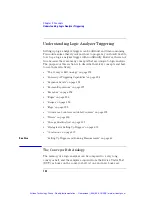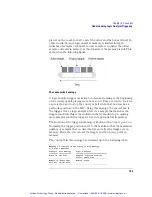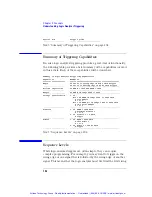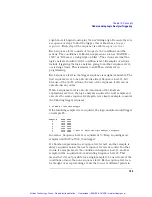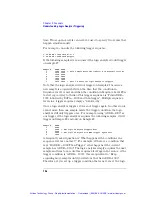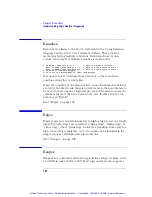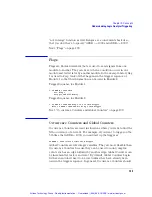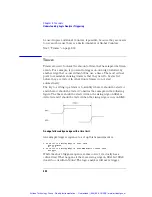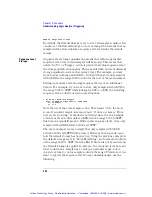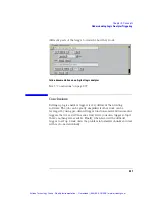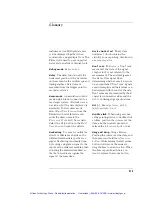
201
Chapter 4: Concepts
Understanding Logic Analyzer Triggering
because timer1 will keep running and condition “Timer1 <500 ns” will
never be met. There might be another rising edge on SIG1 that is
followed within 500ns by the rising edge on SIG2 that occurs later on,
so this situation is unacceptable.
To fix this problem, whenever the timer exceeds 500ns without
triggering, the sequence should loop back to Level 1 to look for another
rising edge on SIG1. The following shows an example of the correct
sequence:
1. If there is a Rising Edge on SIG1, then
Start Timer1
Go to 2
2. If there is a Rising Edge on SIG2 AND Timer1 < 500ns then
Trigger
Else If Timer1 >= 500ns then
Reset Timer1
Go to 1
Occasionally, you may run out of timers. A counter can be used in place
of a timer if the logic analyzer is sampling at regular intervals (that is, if
it's in the timing sampling mode). A timer can be simulated by counting
the number of samples that are acquired. For example, if the logic
analyzer acquires a new sample every 10ns and seven samples are
acquired, this represents 70ns.
Next: “Storage Qualification” on page 201
Storage Qualification
Storage qualification is used to determine if an acquired sample should
be stored (that is, placed in memory) or thrown away. This keeps the
logic analyzer memory from being filled with samples that are not
needed.
Default Storage
The simplest method to set up storage qualification is by setting up the
Default Storage. This is specified separate from the trigger sequence,
such as in a separate tab or another dialog. Default Storage means
“unless a sequence level specifies otherwise, this is what should be
stored”. As an example, you may want to only store samples if ADDR is
in the range 1000 to 2000, so you should set the Default Storage to:
Artisan Technology Group - Quality Instrumentation ... Guaranteed | (888) 88-SOURCE | www.artisantg.com


